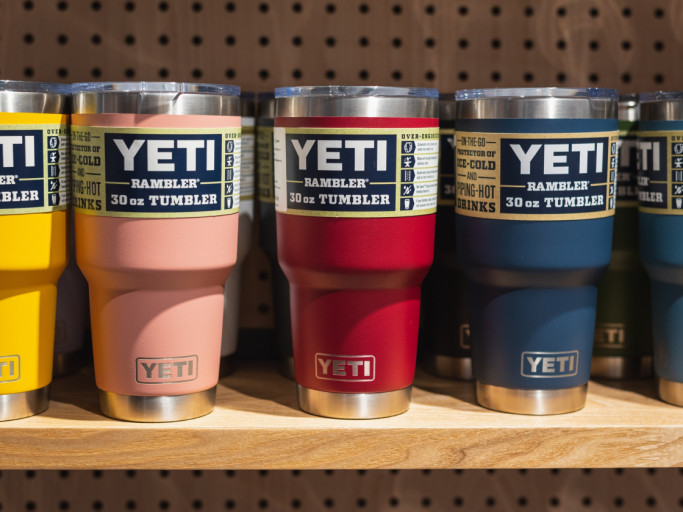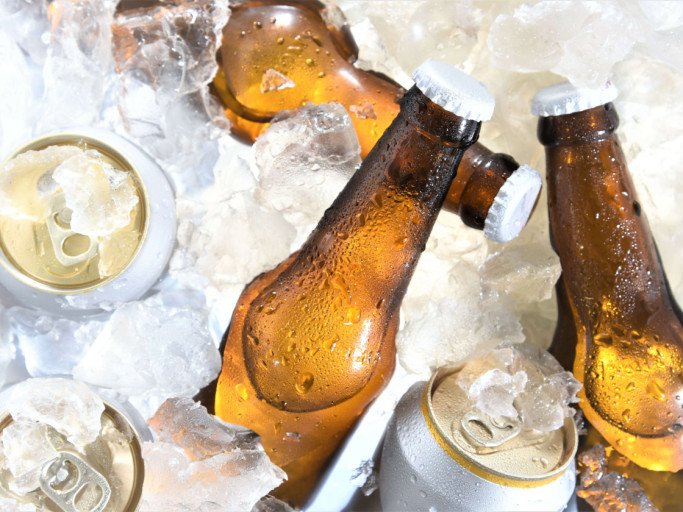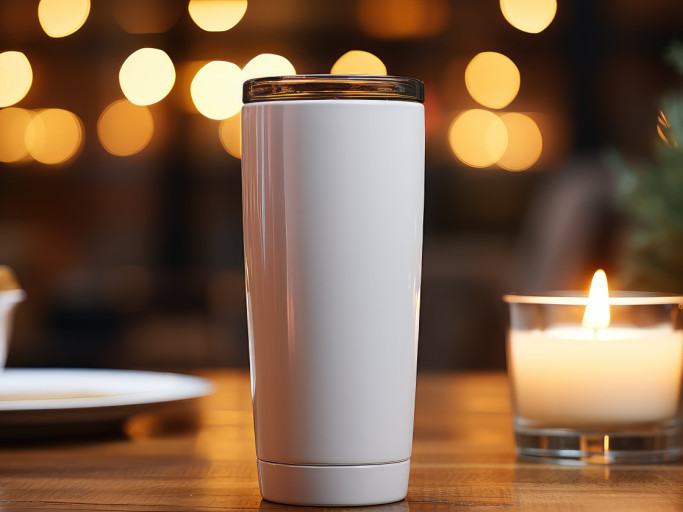Home / Blog / Drinkware & mugs / The History of the Koozie: The Beer Lover’s Friend and Advertising’s Best Kept Secret
The History of the Koozie: The Beer Lover’s Friend and Advertising’s Best Kept Secret
Date posted: 22nd December 2023 in Drinkware & mugs
Last updated: 22nd December 2023

So What is a Koozie?
A koozie, pronounced KOO-zee, is a fabric or foam sleeve designed to thermally insulate a beverage container, like a can or bottle. Its primary function is to keep a chilled beverage from warming due to warm air, sunlight, and body heat. Remarkably, using a koozie can reduce the rate a drink warms in the sun by up to 50%.
Originally, these customized koozies were screen-printed with a logo or image on a round foam cylinder with a base, often including a hole at the base for easy insertion and removal of beer cans. Koozies, also known as can coolers or stubby holders, have evolved since their introduction in the 1950s from neoprene to various materials like foam, fabric, and metal. Initially created by Norwood Promotional Products in the 1980s, the term “koozie” has transcended its brand to represent any can cooler.
Today, koozies are not only functional but also serve as a means of promotion and marketing, often decorated with logos, slogans, or custom designs. They're a staple in outdoor activities, providing a practical and stylish solution to keeping drinks cold.
What is the Generic Name for a Koozie?
The term “koozie” has an interesting origin. It's akin to words like “Band-Aid,” which have become generic terms for the product they represent. The name is believed to have stemmed from the British “cozy,” used for tea pot covers. The shift from “cozy” to “koozie” represents the transition from hot to cold beverage insulation.
While "KOOZIE®" is a registered trademark, there are many other names for these insulated sleeves:
- Stubby holders
- Beer cozies/cosies
- Coosies
- Huggies
- Beer huggers
- Coolies
- Beer sleeves
- Beer jackets
- Coldy-holdies
- Bawdles
- Coasties
- Bottle jackets
- Qoozies
- Insulated can holders
The History of the Koozie
The koozie, a simple yet ingenious invention, has become a staple in our everyday lives, especially during social gatherings, barbeques and outdoor events. But where did this convenient beverage insulator come from? The history of the koozie is as fascinating as it is diverse, stretching from the British tea gardens of the 1800s to the high-tech e-commerce platforms of the 21st century.
The Early Beginnings: British Teapots and Knitted Covers
The 1800s: It all began in Britain, where the concept of insulation first appeared in a rather quaint form. To keep their tea warm, the British used knitted covers for teapots. This early adoption of insulating covers laid the groundwork for what would eventually evolve into the modern koozie.
1950s – The Birth of the Koozie: Fast forward to California in the 1950s, where the Bonnie Doon Engineering Company is credited with inventing the first koozie. These initial versions were made of foam and designed to snugly fit around a standard 12-ounce beer can. This innovation marked the beginning of a new era in beverage insulation technology.
1960s – Enhancements and Evolution: The journey continued with Alex Smith, an engineer at the American Can Company. He invented a device that stabilized cans to prevent spills, later enhancing it with a foam sleeve for better insulation. This creation was soon known as the “Styrofoam Can Cooler,” a significant milestone in the koozie's evolution.
Mid-1970s: The koozie's design took another leap in Australia thanks to inventor Alex Lang. He developed a product specifically to keep beer cold, aptly named the “stubby holder” due to its compatibility with Australia's short, stubby beer bottles. These became a hit among surfers, and their popularity surged with the promotional tactics of the Bonnie Doon Engineering Company.
1980 – The Rise of the Koozie Brand: The Radio Cap Corporation (RCC) in San Antonio, Texas, registered a trademark for the name “Koozie.” They began producing Styrofoam can coolers, later upgrading to foam and neoprene, thereby broadening the custom koozie's appeal as a promotional tool.
1991: The koozie brand saw further growth when Norwood Promotional Products acquired RCC. The koozie's popularity soared, with new materials like neoprene and fabric being introduced, alongside a variety of sizes to fit different beverage containers including bottle koozies, tall boy koozies and more.
2001 – Legal Battles and Expansion: A legal tussle ensued over the “Koozie®” trademark when RCC let it expire. Norwood emerged victorious, retaining ownership. This period also saw the rise of e-commerce, enabling individuals and small businesses to create custom koozies, leading to a surge in personalized and expressive designs.
2009 – The Modern Era of Koozies: Bic Graphic acquired Norwood continuing to produce and distribute authentic Koozie® products. Everything Branded, as an authorized retailer, contributed to the koozie's ubiquity in American culture. Today, koozies are not just a means to keep drinks cold; they are a canvas for creativity and a tool for brand promotion. Their presence is felt in backyards, at sporting events, and anywhere people gather to enjoy a cold beverage.
Is The Term Koozie Still Trademarked?
The term "Koozie" may sound generic, but it's actually still a registered trademark in the United States. Bob Autrey originally coined it, and later it was acquired by Radio Cap Corporation (RCC). Over the years, "Koozie" has faced legal battles and has been subject to genericide, where brand names become common terms for a type of product, much like "Onesie" or "Hula Hoop." Despite these challenges, Norwood Promotional Products, the trademark's current owner, has been fairly permissive, allowing widespread use of the term without stringent enforcement, which has helped "Koozie" become a household name for insulated beverage holders.
Koozies: The Cool Companion for Brand Promotion
In the world of promotional products, few items match the versatility and popularity of the custom koozie. These insulated sleeves are a marketing team's dream, offering a practical use for consumers while serving as a mobile billboard for brands.
Practical Usefulness
First, consider the practicality of a custom koozie. It keeps beverages cold, hands dry, and surfaces free from water rings. Whether your target audience is enjoying a backyard barbecue, cheering at a sports event, or relaxing on a beach, a koozie is often at arm's reach, keeping drinks chilled. This frequent use provides consistent exposure for your brand.
Customization Potential
Koozies are a blank canvas for creativity. They can be customized to any color, printed with high-resolution graphics, logos, and text, and even shaped to fit different types of containers beyond the traditional can or bottle. Materials range from foam to neoprene, each offering a unique tactile experience.
Brand Storytelling
Custom koozies can tell a story. They can commemorate events, celebrate milestones, or echo a company's ethos with eco-friendly materials. They are not just giveaways; they're conversation starters that create a personal connection with the user.
Cost-Effective Advertising
The cost-effectiveness of koozies is unmatched. Bulk production is affordable, yet the perceived value is high. They are lightweight, easy to distribute, and have longevity in people's homes and lives, ensuring that your advertising dollars continue to work long after the first handout.
Diverse Appeal
Custom koozies have a universal appeal. They transcend demographics, appealing to beer enthusiasts, soda sippers, and water drinkers alike. With a broad audience reach, koozies are a one-size-fits-all in the promotional world.
To summarize, on our exploration of the humble koozie, we've traced its origins from the tea gardens of 19th century Britain to today's diverse array of vibrant, custom-insulated beverage holders. The koozie's journey is marked by innovation and adaptation, from the pioneering foam design by the Bonnie Doon Engineering Company to the surf-friendly stubby holders of 1970s Australia. The term "Koozie" itself, trademarked by Radio Cap Corporation and popularized by Norwood Promotional Products, encapsulates the product's evolution into a cultural icon.
But why are koozies a marketing goldmine? Their everyday practicality ensures that your brand is a constant companion during leisure activities, from picnics to game days. The koozie's surface is ideal for customization, allowing for vibrant representations of logos and slogans that catch the eye and spark conversation. Affordable to produce, easy to distribute, and with a vast audience reach, koozies offer an enduring return on investment. They aren't just promotional items; they're handheld billboards offering repeat exposure.
Koozies have proven to be not just a way to keep drinks cool but a smart strategy for warm customer relations and hot branding opportunities. Their story is a testament to the power of practical innovation and savvy marketing.
References
Koozie. (2023, Dec 22). In Wikipedia. Retrieved December 22, 2023,
https://en.wikipedia.org/wiki/Koozie
“KOOZIE - Trademark Details” (2023, Dec 22). In Justia. Retrieved December 22, 2023, from
https://trademarks.justia.com/765/73/koozie-76573657.html
Fawbush, Margit. (2017, May. 22). “A Brief History of the Koozier Brand.” Retrieved December 22, 2023,
https://kooziegroupblog.com/2017/05/22/a-brief-history-of-the-koozier-brand/
Baird, Sarah. (2015, Aug. 6). “A Brief History of America’s Favorite Beer Companion, the Koozie.” Retrieved December 22 2023,from https://www.eater.com/drinks/2015/8/6/9109317/a-brief-history-of-americas-favorite-beer-companion-the-koozie
Craftjacks. “The Koozie® vs Coozie vs Cozy Argument.” Retrieved December 22, 2023, from
https://www.findmeabrewery.com/koozie-coozie-cozy/#:~:text=Coozie%20is%20another%20word%20for,Koozie%20is%20a%20registered%20trademark
Swann, Cody. (2014, April 24). “5 Things We Bet You Didn’t Know About KOOZIES®.” Retrieved December 22, 2023, from
https://countryshoreoutfitters.com/blogs/news/13891101-5-things-we-bet-you-didnt-know-about-koozies
Farrell, Kenan (2012, Jan 06). "Indiana Trademark Litigation Update — Norwood Promotional Products v. Kustom Koozies (DECISION)". Indiana Intellectual Property web log.
Glenn, Brittany (2005, Sep). "NORWOOD BATTLES FOR THE KOOZIE NAME". Promotional Products Business magazine. Archived from the original on 2011-12-06.

Strengthen your brand perception with promotional products
Chat online or call us today on 1800-586-1615
More Articles

Does Brand Matter? Do Premium Promotional Tumblers and Water Bottles Give Your Company an Edge?
25th July 2024 in Drinkware & mugs

Choosing the Perfect Custom Koozie Size: From Small to Tall Boy
22nd February 2024 in Drinkware & mugs

How to Choose the Perfect Material for Your Custom Tumbler: A Comprehensive Guide
15th June 2024 in Drinkware & mugs

Can Custom Tumblers Maintain the Temperature of Beverages?
22nd July 2024 in Drinkware & mugs